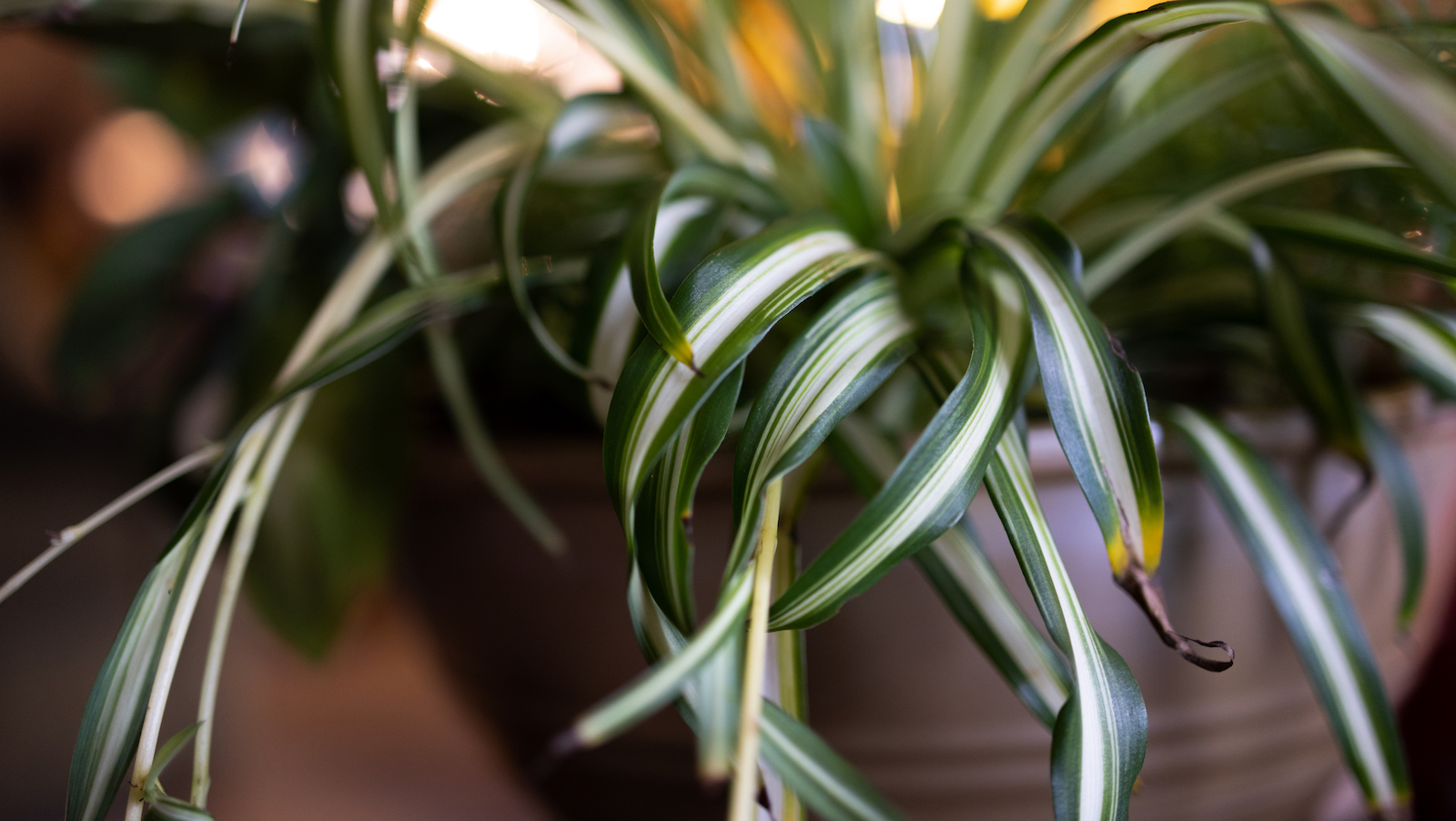
Unsightly spider plant brown tips are never welcome and threaten the aesthetic and health of our indoor garden. Obviously, we plant parents cannot let that happen on our watch.
To ensure our greenery stays green, we spoke to expert gardeners about the causes of browning and how to fix our floras when the problem strikes. You'll be pleased to know it's an easy adjustment, and you won't have to worry about any permanent repercussions.
As your collection of indoor plants continues to grow, here's what you need to know about keeping the spider plant alive and well, and how to wave goodbye to brown spots.
How to avoid spider plant brown tips
Caring for a spider plant is one of the easier tasks for plant parents to master, but that doesn't mean the selection doesn't present its share of challenges.
"Dealing with brown spots on spider plants is a common issue, often arising from over-watering, insufficient drainage, too much direct sunlight, or fluoride content in tap water," says Gene Caballero, co-founder of GreenPal.
When figuring out how often to water a spider plant, where to place it in your home, and what troubling signs to look out for, you'll be one step closer to keeping your leafy friend worthy of a #PlantTok cameo, and without brown tips, of course.
1. Pick the right pot
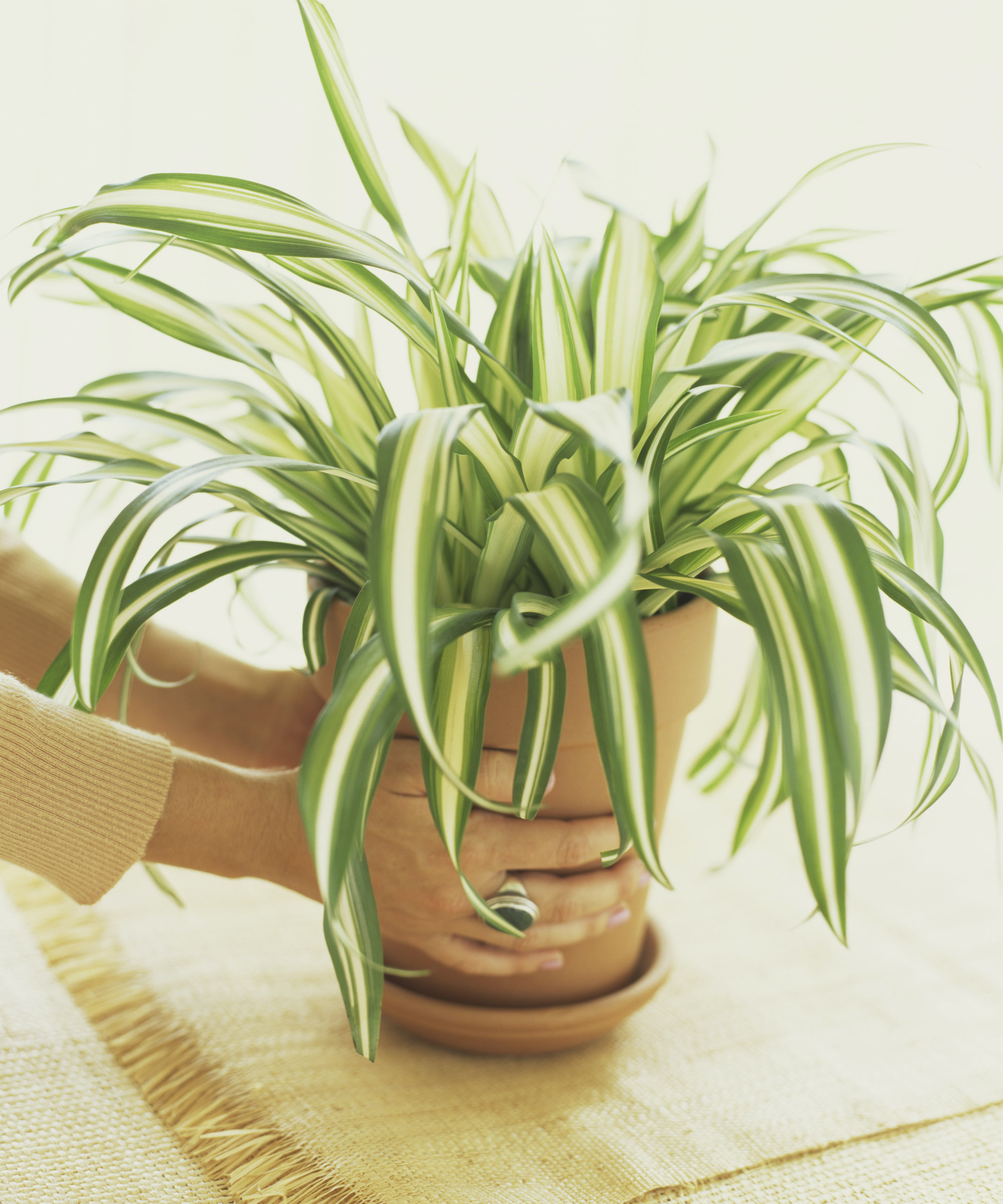
Should watering issues lead to brown spots, Gene suggests finding a self-watering planter to give you a little extra assistance. Room Essentials' Self-Watering Plastic Indoor Outdoor Planter Pot from Target, which comes in five sizes and four colors, is a customer favorite.
"Ensure your spider plant is in a pot with good drainage and use filtered or rainwater to avoid fluoride," he says. "Place the plant in an area with bright, indirect sunlight."
When working with this plant, it's best to opt for distilled water or rainwater, as fluoride in tap water can have a toxic effect on them.
2. Avoid direct sunlight
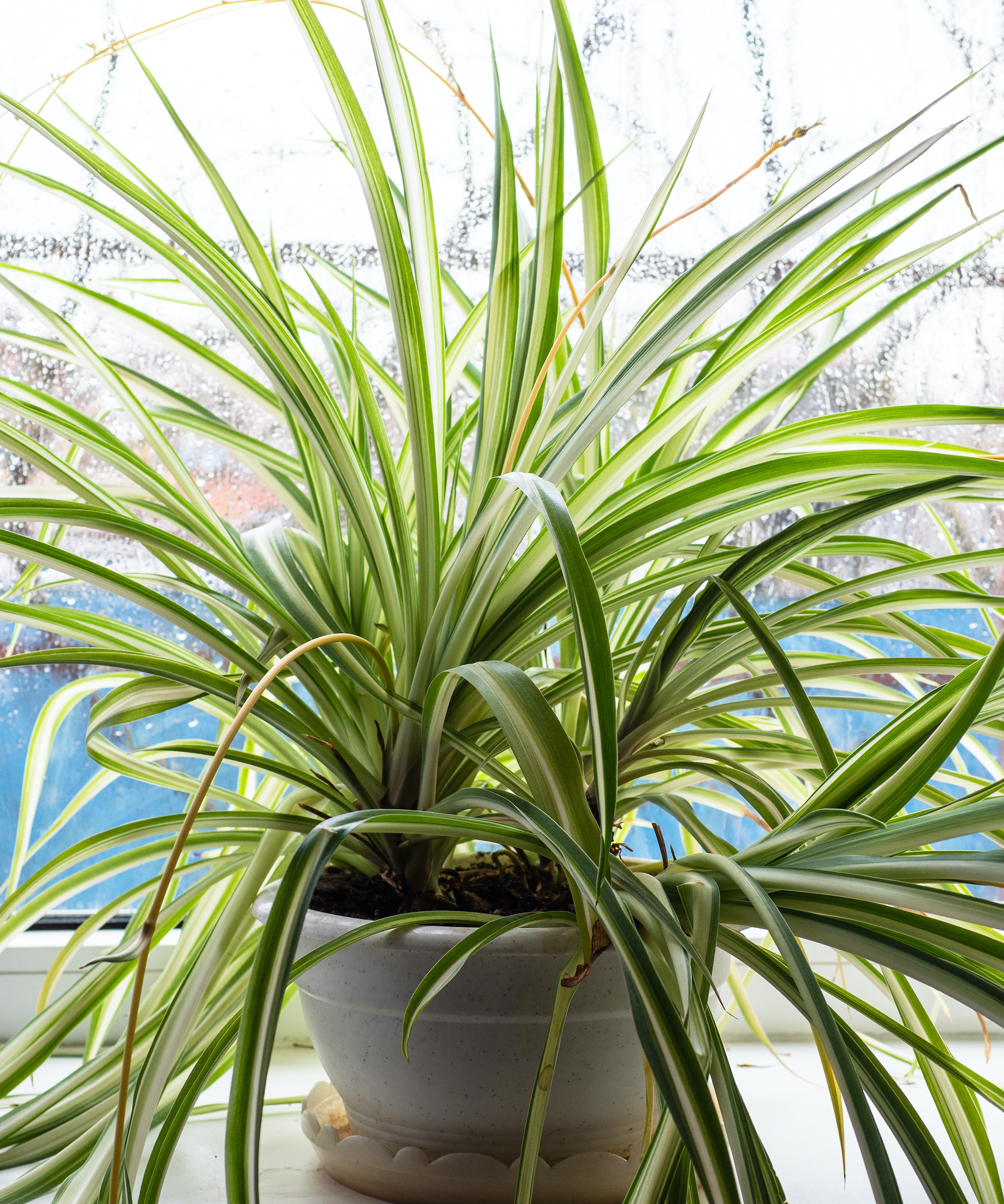
"Direct sunlight is a no-no and is usually the first cause of brown spots," says Jen McDonald, plant expert and founder of Garden Girls. "These spots are an indication of sunburn and often start at the tips. Choose a spot with dappled sunlight or better yet, throw them some shade."
Since these plants don't mind a little humidity, Jen suggests keeping them in the W.C. And while you're at it, we've conveniently rounded up the best plants for small bathrooms to avoid your sole potted greenery getting lonely.
3. Look for warning signs
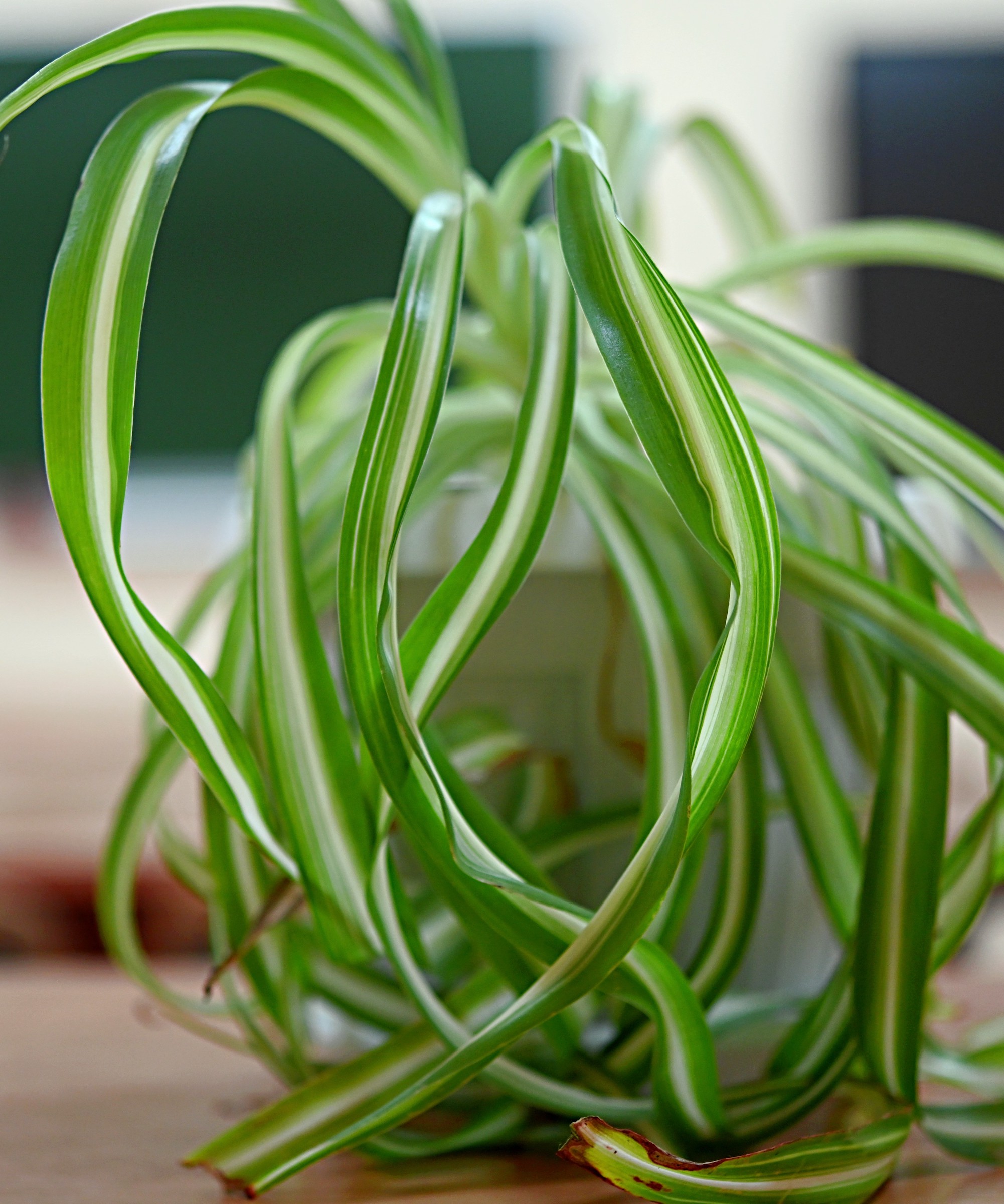
"If you notice yellowing leaves or a wilted look, these could be early signs of brown spots developing, usually indicating over-watering or excessive sunlight," Gene says. "Adjust by reducing water frequency, allowing the top inch of soil to dry out before watering again, and ensuring the plant is not in direct sunlight."
4. Be vigilant during the winter
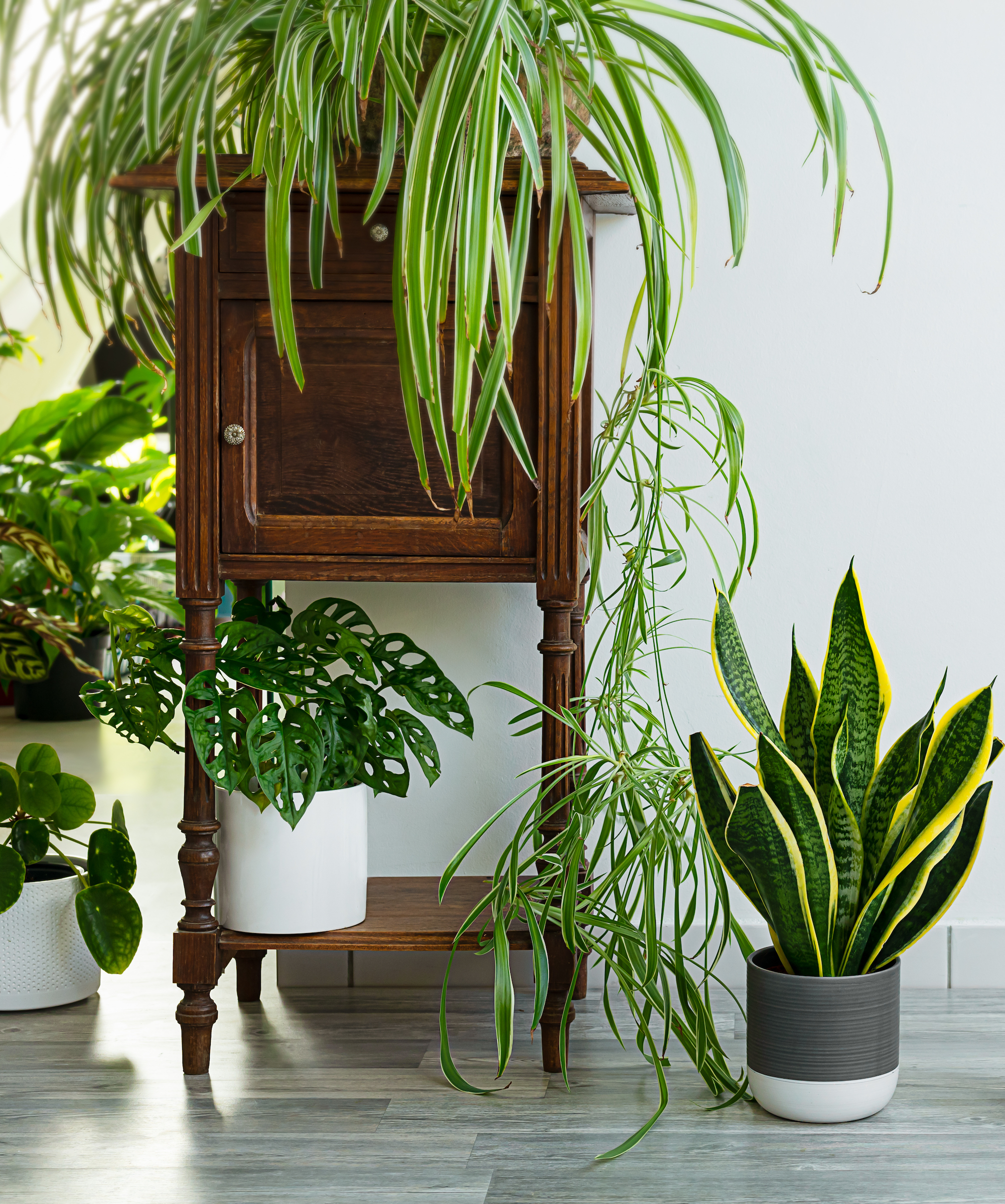
Gardening in an apartment might seem like a good way to avoid Mother Nature's harsher seasons, but pay extra attention to the spider plant when the cold weather sweeps in.
"You may notice brown spots (especially in winter months) because conditions [inside] are too dry," Jen says. "Group your spider plant with other houseplants so they can work together to release moisture into the air. Or, place your spider plant on a tray with pebbles and a small amount of water so that the plant can intake additional moisture without rotting at the root level."
The Brussel's 8" Humidity Tray with Decorative Rocks on Amazon received a whopping 4.5/5 stars from shoppers if you're looking for ways to combat the few weeks of winter that are left.
FAQs
Can you cut the dead ends off a spider plant?
Yes, you can cut the brown tips off a spider plant, but do keep in mind the issue won't stop until you correct the problem, whether that means adjusting your watering schedule or moving it away from direct sunlight. Find out what is causing the brown spots and adjust your care tactics accordingly.
Why does my spider plant keep getting brown tips?
There are several reasons your spider plant could be getting brown tips. The first is its placement in your home. If it receives too much direct sunlight, it has the potential to turn brown. Our guide to spider plant light requirements will get you and your plant moving in the right direction. Additionally, you could be giving your plant either too much or too little water.
"Spider plants thrive with weekly watering. Make sure the soil is evenly moist but not soggy," Gene says. "It's best to water thoroughly, letting excess water drain away without letting the plant sit in it."
Do spider plants like to be misted?
Since spider plants tend to gravitate towards humid areas, we suggest either placing them in one of the more humid sections of your home (such as the bathroom) or misting them when you can. Currently, the Hula Home Continuous Spray Bottle on Amazon is nearly half off and would make a great accessory for your plant collection, and a much-needed one at that.
What to shop
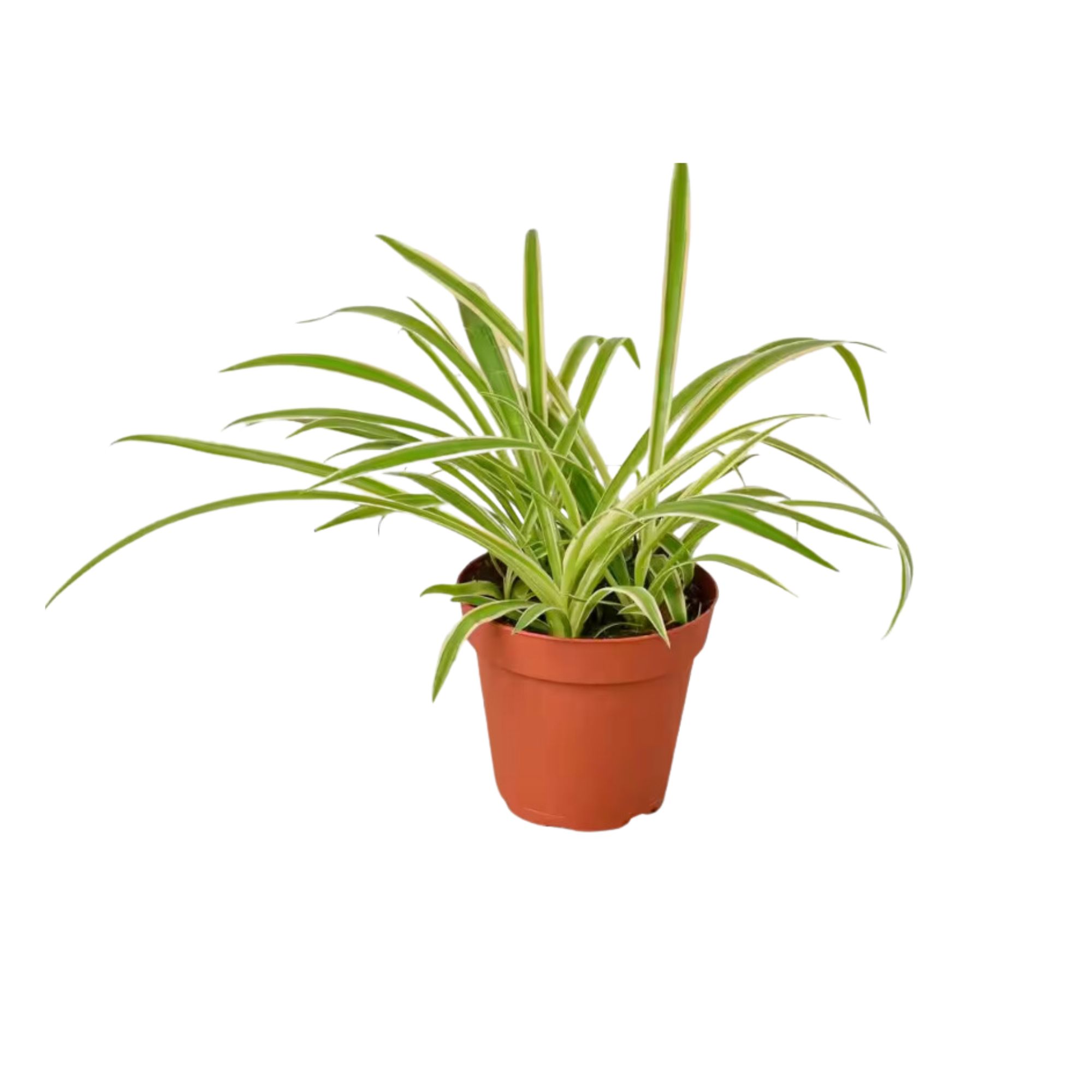
Price: $19.99
Dimensions (in.): 4

Price: $14.98
Capacity (ml.): 350
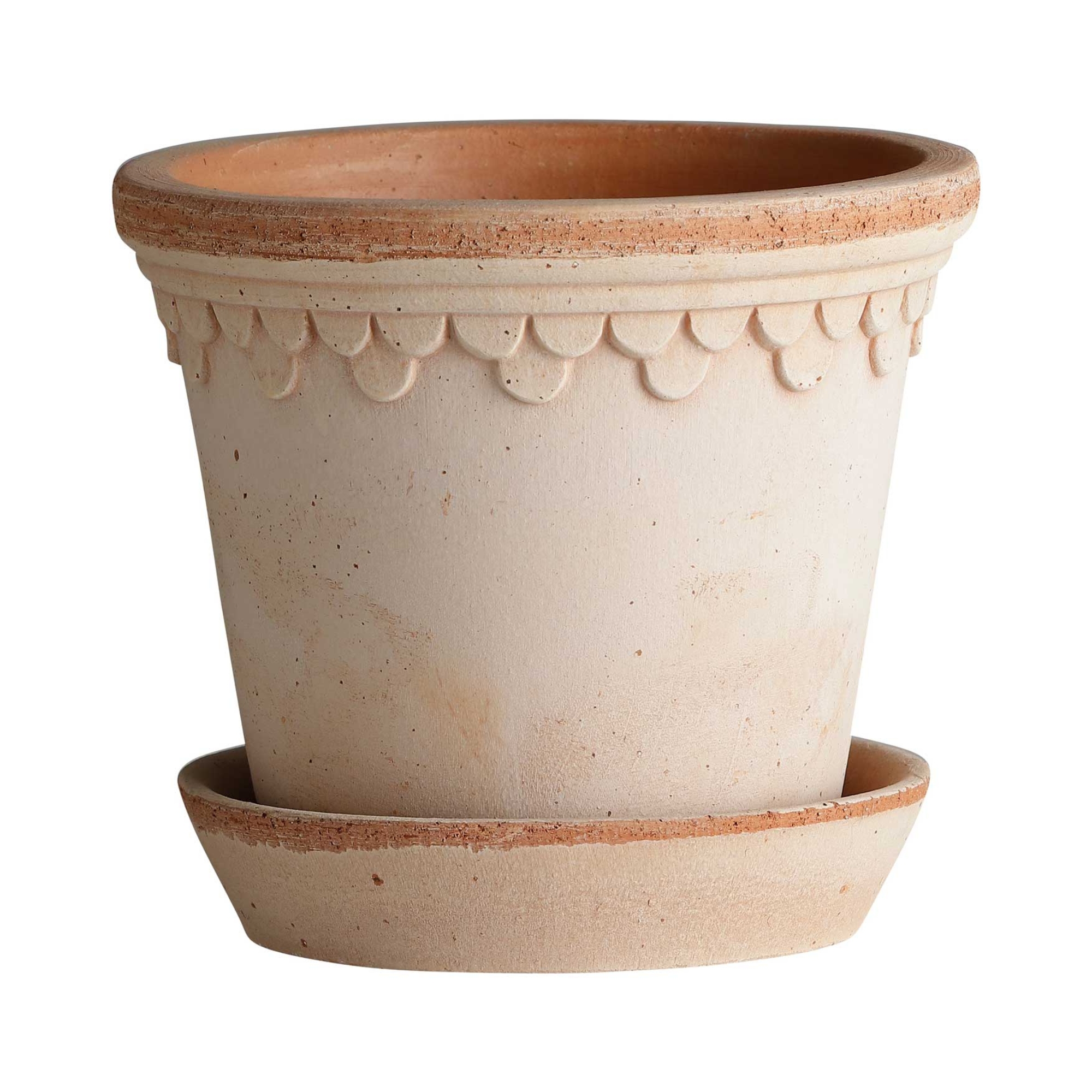
Price: $26-$164
Dimensions (in.): 5, 6, 7, 10, or 14
Love plants but hate the unwanted guests they attract? We can't blame you. We asked experts how to get rid of gnats in houseplants and keep the pests away permanently so your glossy indoor garden is bug-free.







